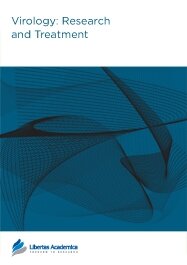

Publication Date: 18 Nov 2013
Type: Review
Journal: Virology: Research and Treatment
Citation: Virology: Research and Treatment 2013:4 49-59
doi: 10.4137/VRT.S12140

Since the isolation and discovery of human T-cell leukemia virus type 1 (HTLV-1) over 30 years ago, researchers have utilized animal models to study HTLV-1 transmission, viral persistence, virus-elicited immune responses, and HTLV-1-associated disease development (ATL, HAM/TSP). Non-human primates, rabbits, rats, and mice have all been used to help understand HTLV-1 biology and disease progression. Non-human primates offer a model system that is phylogenetically similar to humans for examining viral persistence. Viral transmission, persistence, and immune responses have been widely studied using New Zealand White rabbits. The advent of molecular clones of HTLV-1 has offered the opportunity to assess the importance of various viral genes in rabbits, non-human primates, and mice. Additionally, over-expression of viral genes using transgenic mice has helped uncover the importance of Tax and Hbz in the induction of lymphoma and other lymphocyte-mediated diseases. HTLV-1 inoculation of certain strains of rats results in histopathological features and clinical symptoms similar to that of humans with HAM/TSP. Transplantation of certain types of ATL cell lines in immunocompromised mice results in lymphoma. Recently, “humanized” mice have been used to model ATL development for the first time. Not all HTLV-1 animal models develop disease and those that do vary in consistency depending on the type of monkey, strain of rat, or even type of ATL cell line used. However, the progress made using animal models cannot be understated as it has led to insights into the mechanisms regulating viral replication, viral persistence, disease development, and, most importantly, model systems to test disease treatments.
PDF (860.56 KB PDF FORMAT)
RIS citation (ENDNOTE, REFERENCE MANAGER, PROCITE, REFWORKS)
BibTex citation (BIBDESK, LATEX)
XML
PMC HTML

We were invited to write a review article for Virology: Research and Treatment. The review process was very quick and smooth and our interactions with Libertas Academica staff was clear, efficient and very personable. I highly recommend publishing with this group.
Facebook Google+ Twitter
Pinterest Tumblr YouTube